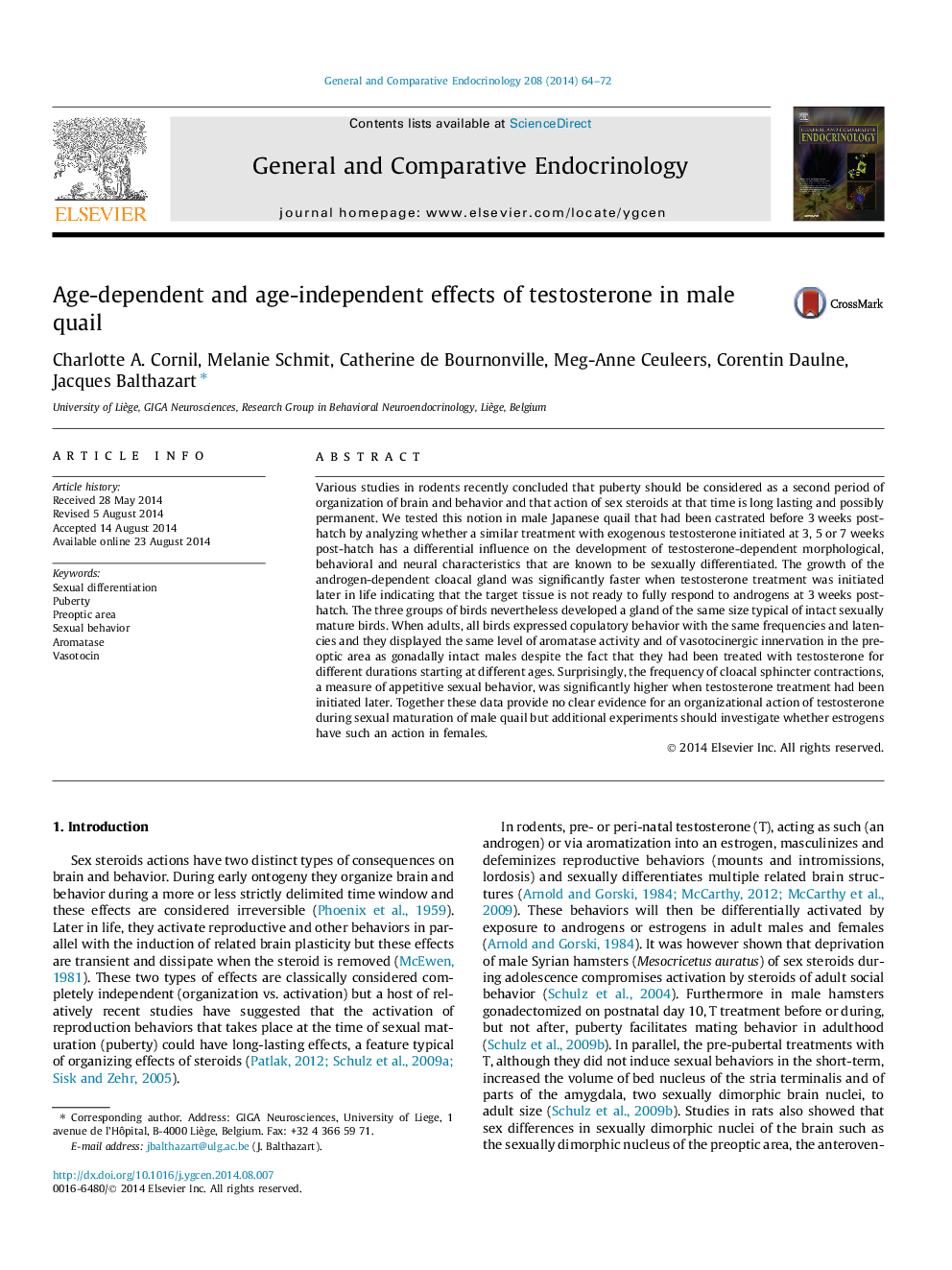| Article ID | Journal | Published Year | Pages | File Type |
|---|---|---|---|---|
| 2800127 | General and Comparative Endocrinology | 2014 | 9 Pages |
•Cloacal glands develop faster in response to testosterone in older quail.•Appetitive sexual behavior is enhanced more by a later testosterone implantation.•Consummatory sexual behavior is not affected by age at testosterone implantation.•Preoptic aromatase activity and vasotocinergic innervation are not affected.•Peri-pubertal testosterone does not seem to have organizational effects in male quail.
Various studies in rodents recently concluded that puberty should be considered as a second period of organization of brain and behavior and that action of sex steroids at that time is long lasting and possibly permanent. We tested this notion in male Japanese quail that had been castrated before 3 weeks post-hatch by analyzing whether a similar treatment with exogenous testosterone initiated at 3, 5 or 7 weeks post-hatch has a differential influence on the development of testosterone-dependent morphological, behavioral and neural characteristics that are known to be sexually differentiated. The growth of the androgen-dependent cloacal gland was significantly faster when testosterone treatment was initiated later in life indicating that the target tissue is not ready to fully respond to androgens at 3 weeks post-hatch. The three groups of birds nevertheless developed a gland of the same size typical of intact sexually mature birds. When adults, all birds expressed copulatory behavior with the same frequencies and latencies and they displayed the same level of aromatase activity and of vasotocinergic innervation in the preoptic area as gonadally intact males despite the fact that they had been treated with testosterone for different durations starting at different ages. Surprisingly, the frequency of cloacal sphincter contractions, a measure of appetitive sexual behavior, was significantly higher when testosterone treatment had been initiated later. Together these data provide no clear evidence for an organizational action of testosterone during sexual maturation of male quail but additional experiments should investigate whether estrogens have such an action in females.
